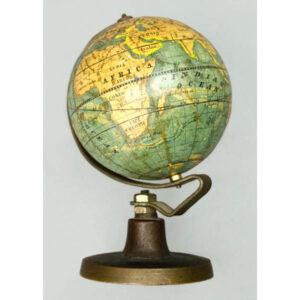Description
Deák explains that this view likely had personal meaning to Robertson:
Embraced in the view is what Robertson probably considered the best of two worlds: the dense, man-designed metropolis of Manhattan, where he conducted a flourishing art school with his brother, and the pastoral surroundings of this summer retreat, which he could reach via a short ferry ride across the Hudson River.
Alexander Robertson was a Scottish-born miniaturist, landscape painter and teacher of art. He immigrated to New York in 1792 where he joined his older brother Archibald (1765-1835), also an artist. Together they ran the Columbian Academy of Painting, one of the earliest art schools in America. Robertson exhibited regularly at the American Academy, where he was member from 1817 and served as Secretary from 1817 to 1825 and Keeper from 1820 to 1835.
Francis Jukes was a British engraver, etcher and aquatintist. He frequently worked with Robert Pollard; Pollard did the etching and Jukes the aquatinting, sometimes after Pollard’s own designs. Jukes chiefly produced topographical prints in engraving, etching and, most notably aquatint, at which he was particularly skilled. In addition to many works after Edward Dayes and John Gilpin, his notable productions include Walmsley’s Views in Ireland and Nicholson’s Views in England.
Full publication information: “London Pub’d. March 31st, 1800, by F. Jukes No. 10 Howland Street and by Al. Robertson Columbian Academy Liberty Street New York.”
Condition: Generally very good, recently professionally cleaned and deacidified, with minor remaining toning. Some greater wear and minor abrasions and tape adhesion to blank margins. Professionally backed on Japanese paper to strengthen overall and restore few marginal chips and tears.
References:
Deák, Gloria Gilda. Picturing America. Princeton University Press: 1989. 216.
Groce, George C. and Wallace, David H. The New-York Historical Society’s Dictionary of Artists in America 1564-1860. New Haven: Yale University Press, 1969. p. 540.
Redgrave, Samuel. A Dictionary of Artists of the English School: Painters, Sculptors, Architects, Engravers and Ornamentists. London: Longmans, Green, and Col., 1874. p. 235 (Jukes).







